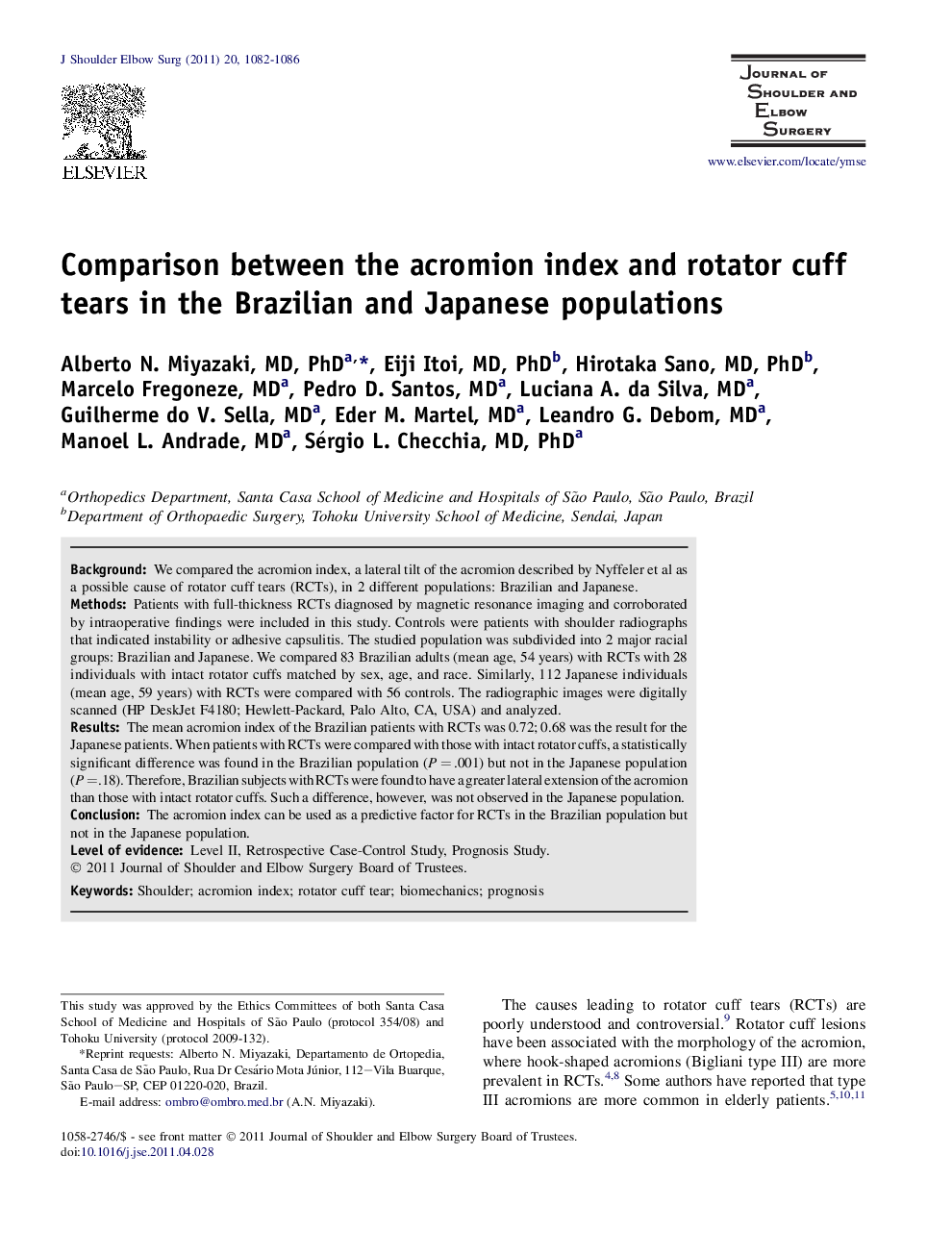| Article ID | Journal | Published Year | Pages | File Type |
|---|---|---|---|---|
| 4075870 | Journal of Shoulder and Elbow Surgery | 2011 | 5 Pages |
BackgroundWe compared the acromion index, a lateral tilt of the acromion described by Nyffeler et al as a possible cause of rotator cuff tears (RCTs), in 2 different populations: Brazilian and Japanese.MethodsPatients with full-thickness RCTs diagnosed by magnetic resonance imaging and corroborated by intraoperative findings were included in this study. Controls were patients with shoulder radiographs that indicated instability or adhesive capsulitis. The studied population was subdivided into 2 major racial groups: Brazilian and Japanese. We compared 83 Brazilian adults (mean age, 54 years) with RCTs with 28 individuals with intact rotator cuffs matched by sex, age, and race. Similarly, 112 Japanese individuals (mean age, 59 years) with RCTs were compared with 56 controls. The radiographic images were digitally scanned (HP DeskJet F4180; Hewlett-Packard, Palo Alto, CA, USA) and analyzed.ResultsThe mean acromion index of the Brazilian patients with RCTs was 0.72; 0.68 was the result for the Japanese patients. When patients with RCTs were compared with those with intact rotator cuffs, a statistically significant difference was found in the Brazilian population (P = .001) but not in the Japanese population (P = .18). Therefore, Brazilian subjects with RCTs were found to have a greater lateral extension of the acromion than those with intact rotator cuffs. Such a difference, however, was not observed in the Japanese population.ConclusionThe acromion index can be used as a predictive factor for RCTs in the Brazilian population but not in the Japanese population.
